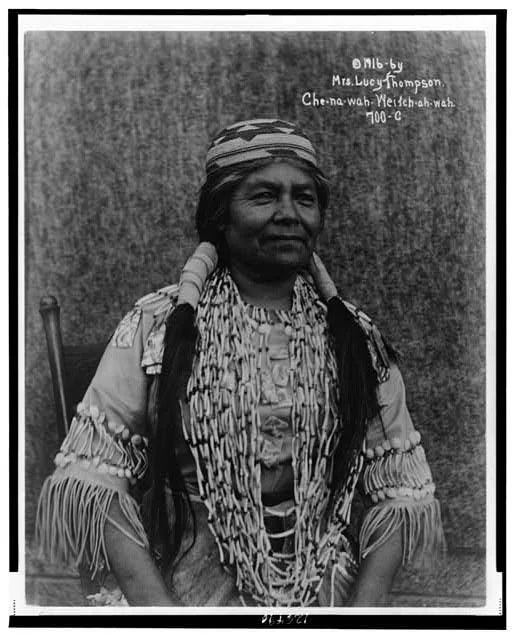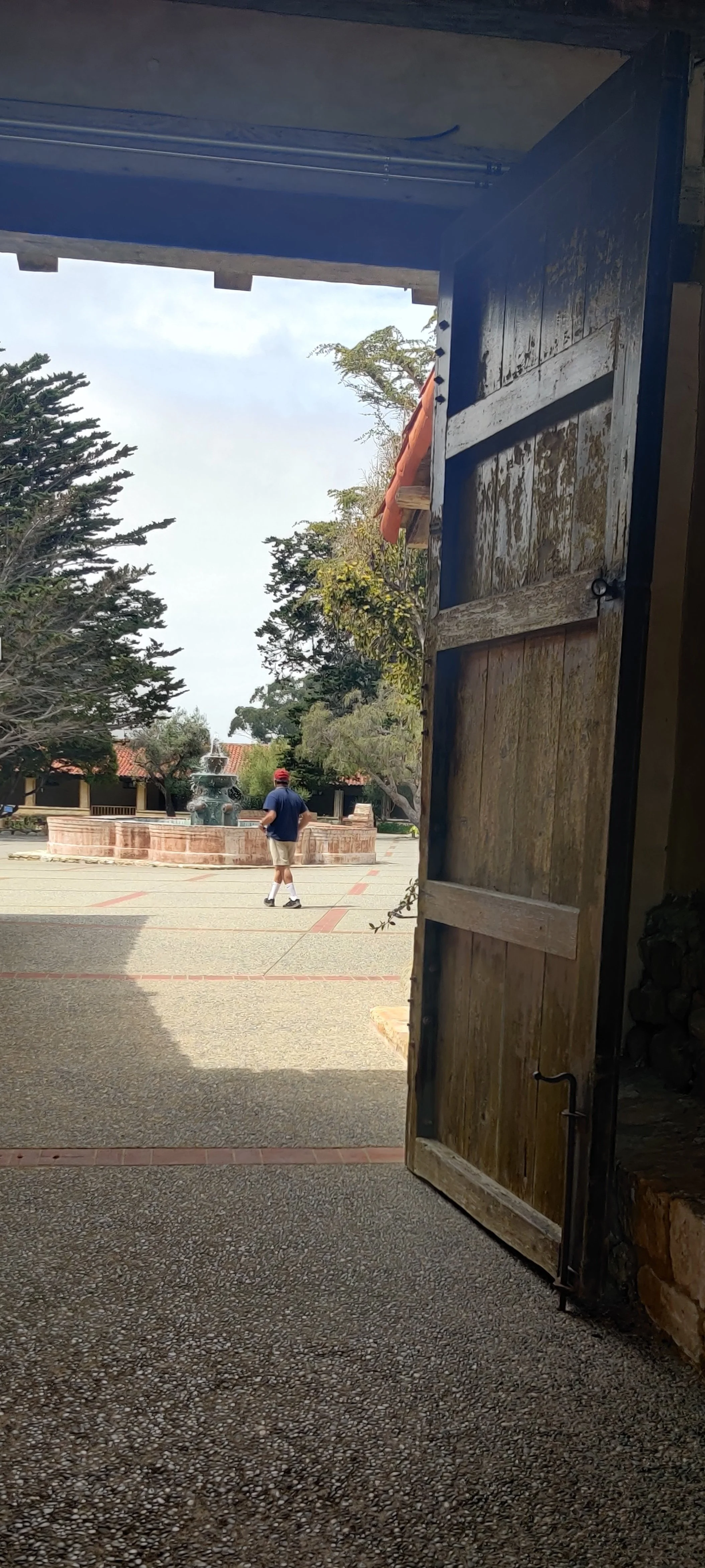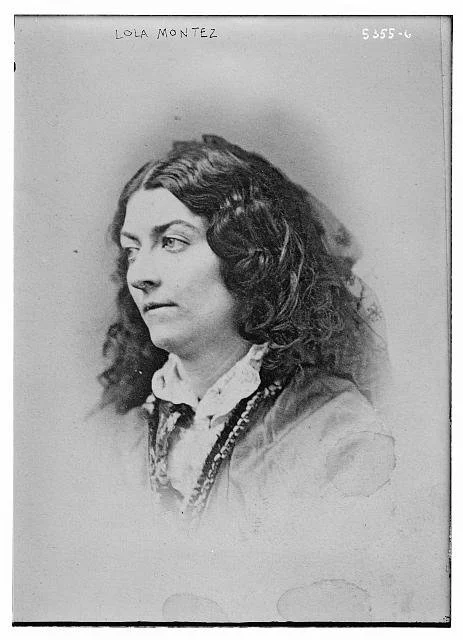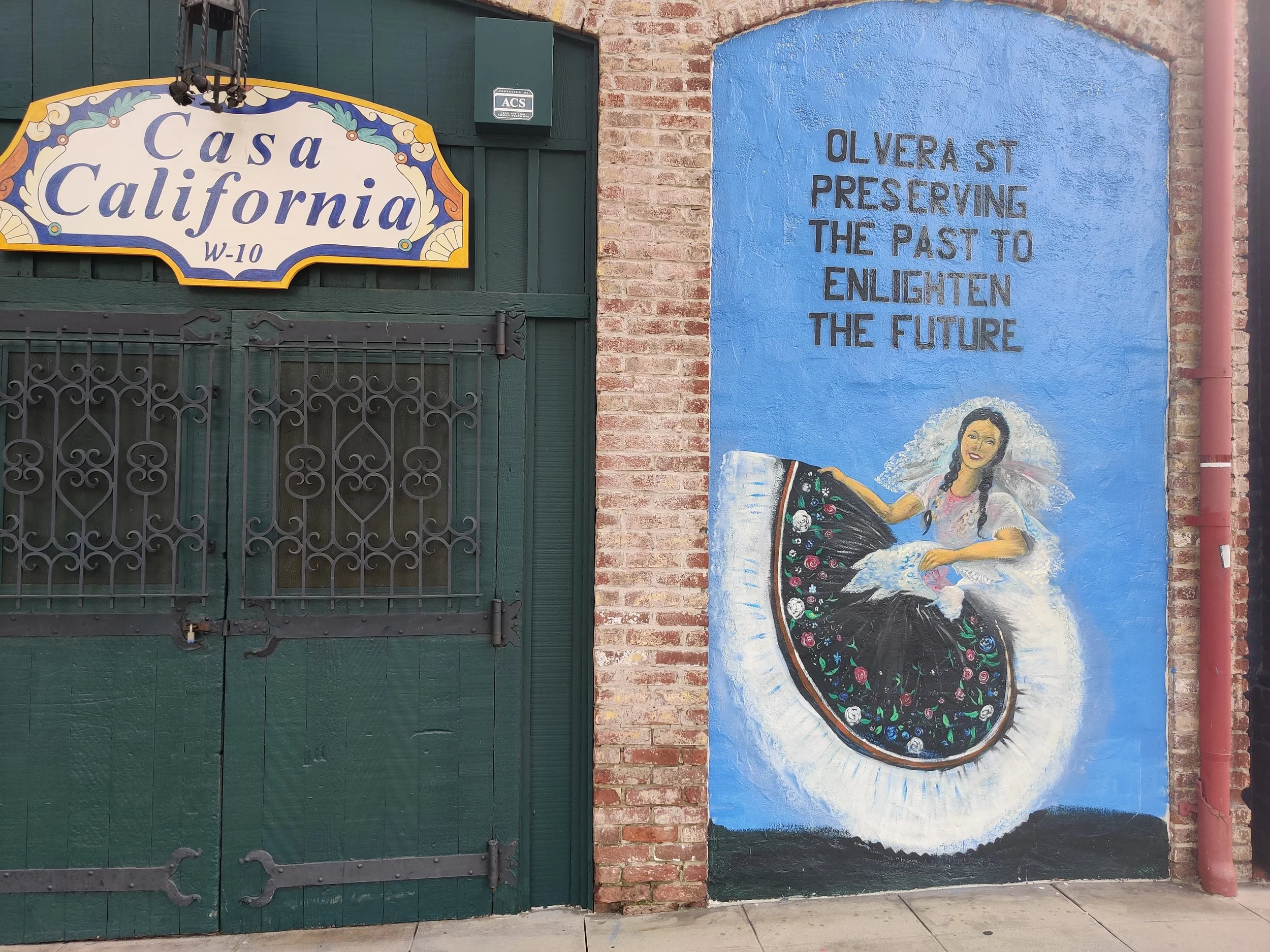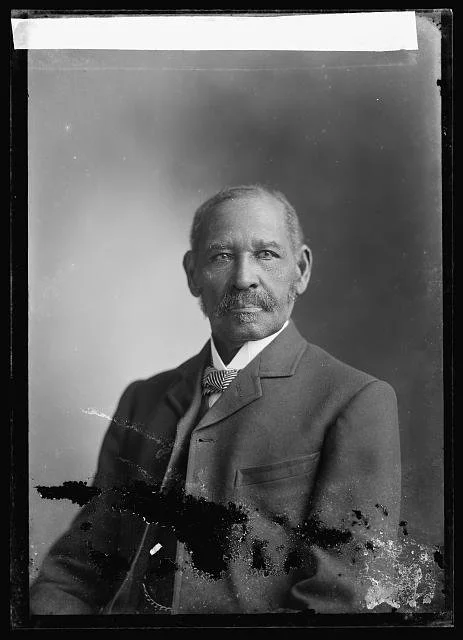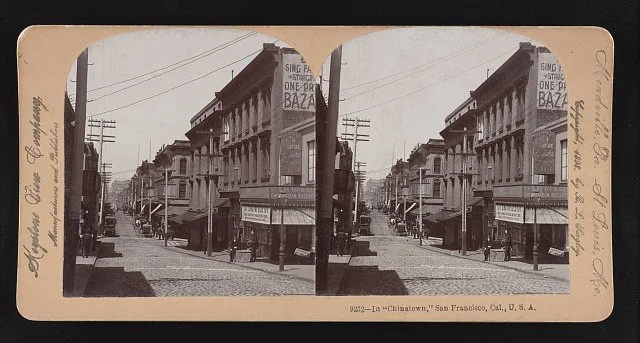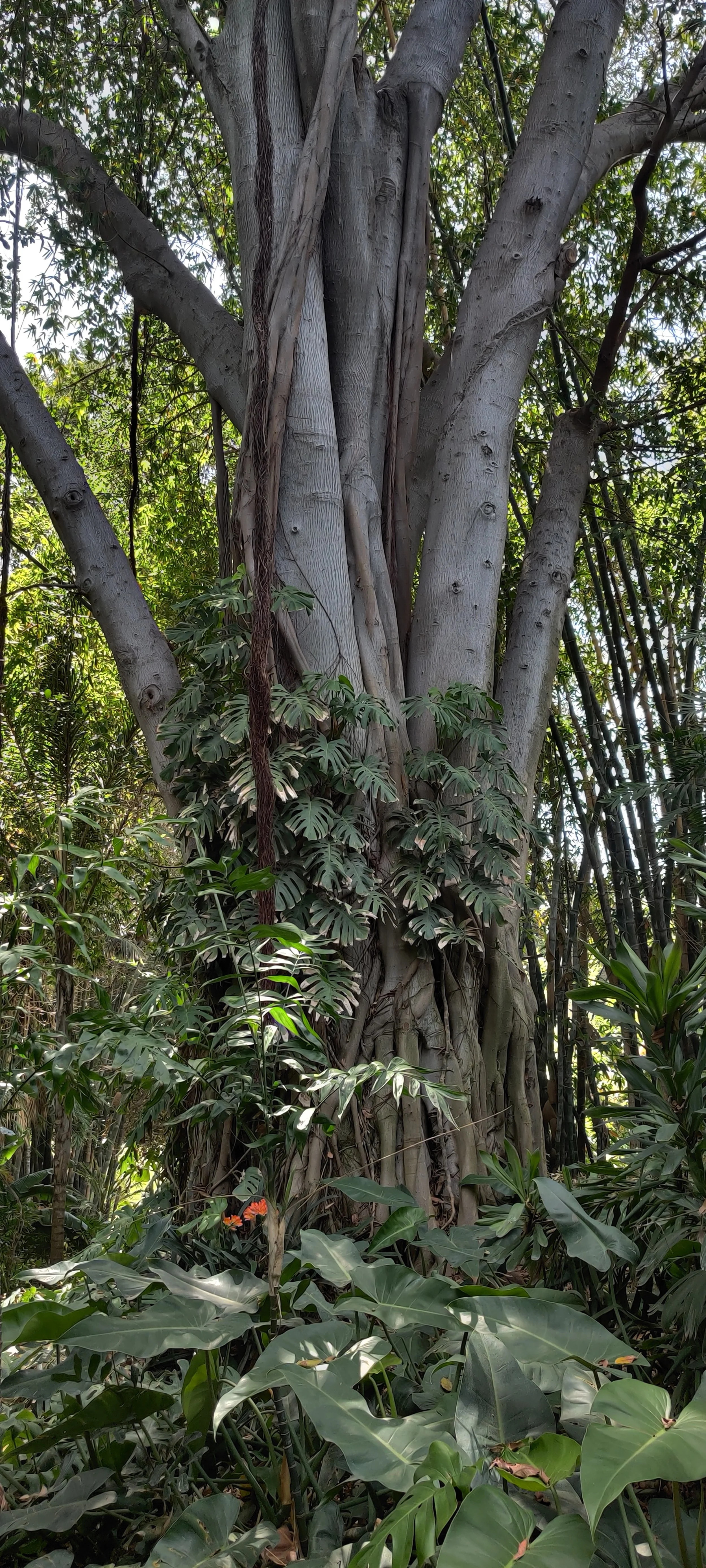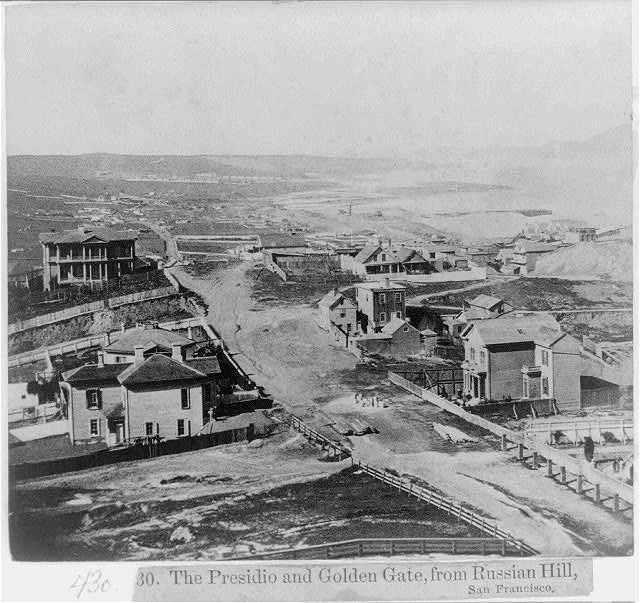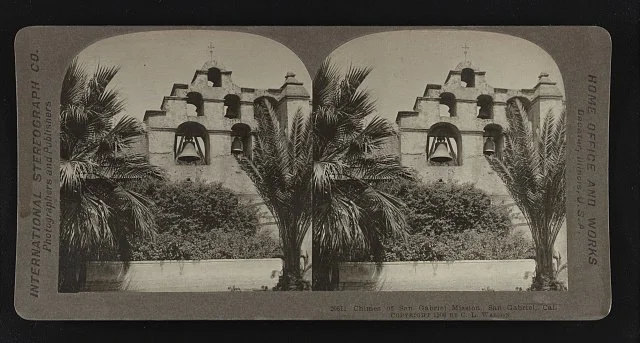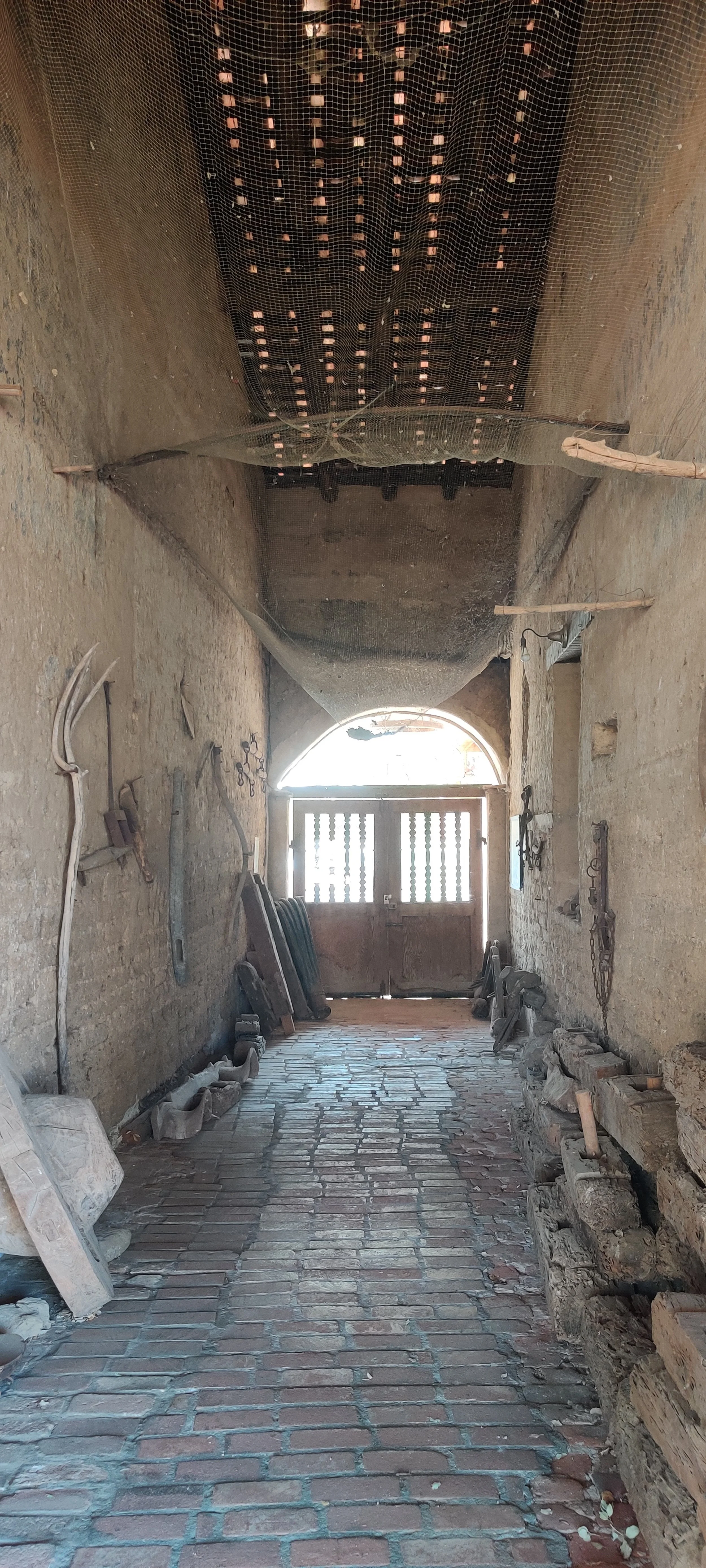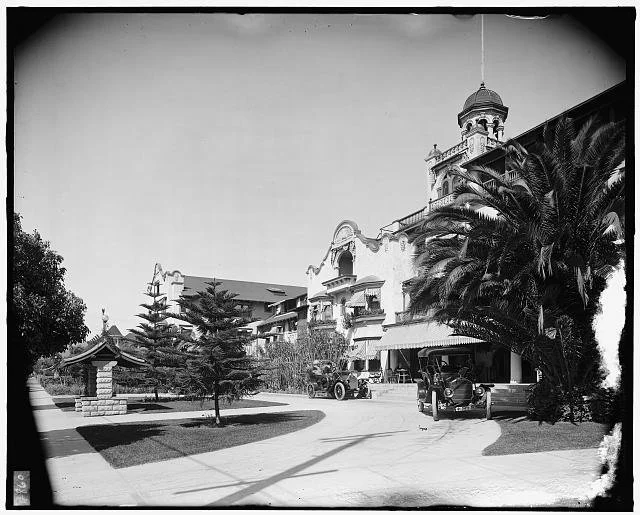Stories of Early Californians and the History They Lived Through
Mrs. Wong Mee Shee
An immigrant from Hong Kong, she was impacted by the Chinese Exclusion Act of 1882 when she attempted to settled in San Francisco. She became one of the many residents of San Francisco’s flourishing Chinatown, and she served as a Chinese school teacher for years to come. Her recollections of her detainment at Angel Island portrays the immigrant experiences of the early 20th century.
For More Information: Immigrant Voices: Angel Island Immigration Station Foundation
Annie Bidwell
Compared to most women of her time, she married later in her life. She would surround herself with those engaged in activism for the environment and women’s rights (both were also unusual for women in the 19th century). She forged alliances with Native American groups in the Northern California community of Chico and became an activist for Indian rights in her later years.
For More Information: Bidwell Mansion Park
Lucy Thompson
She was a community member of the Yurok tribe which resided in California long before European arrival to the region. Her native name is Che-na-wah Weitch-ah-wah. She published an invaluable work called, “To the American Indian” in 1916 which described the culture and customs of her family and community.
For More Information: Online Archive of California
Lucy Thompson or Che-na-wah Weitch-ah-wah
Courtesy of the Library of Congress, J217601
Library of Congress, LC-USZ62-126490
Charlotta Bass
She was considered a pioneer for Black rights in the early 20th century as she combatted social injustice and racism. She took these challenges head on when she became owner and writer for the California Eagle which was a newspaper published in California and she became the first Black woman to take the helm of a newspaper in the United States.
For More Information: Natural History Museum
Ina Coolbrith
She was one of the first few children from the United States to travel to California in the early 1850s from the Midwest. She became a renown poet and educator and surrounded herself with a circle of like-minded writers as she became an adult. Her works became so well respected that she was named the first Poet Laureate of California in 1915.
For More Information: Cool Poetry
Clara Shortridge Foltz
She is considered to be the first female lawyer not just on the Pacific coast of the United States but particularly practicing law in California. She would also become California’s first female deputy district attorney. She would spend much of her life advocating for both a public defender movement and women’s rights.
For More Information: California Bar Journal
Mary Emily Foy
She possessed a near encyclopedic knowledge compared to those around her, and she utilized her intelligence to serve as the first female head librarian for the city of Los Angeles in the late 19th century. She was an advocate for women’s rights throughout her life and even attempted an unsuccessful political bid in the early 20th century.
For More Information: Los Angeles Times
Mary E. Foy
Courtesy of Library of Congress, 2014702212
Library of Congress, LC-DIG-ggbain-22273
Jessie Benton Fremont
She was exposed to the world of politics from her earliest ages, but women were not allowed to be directly involved in politics. Thus, she utilized her married life to make a positive impact in the political sphere. She married John Charles Fremont (who was crucial in California’s independence from Mexico and represented the new Republican Party in 1856). She became a force as the potential “first,” First Lady from California (though he would lose the campaign).
For More Information: The Atlantic
Biddy Mason
She was born into slavery in the early 19th century. After being moved to California, she successfully sued for her freedom in the middle of the century, and she and her family were considered free persons. She was one of the first Black women to own land in Los Angeles where she would become the founder of the First African Methodist Episcopal Church in the city.
For More Information: National Park Service
Eulalia Pérez de Guillén Mariné
She was once considered one of the oldest living individuals in California who was able to recount the Spanish, Mexican, and American periods in greater Los Angeles. She was known as one of the most respected individuals at Mission San Gabriel as she became the “llavera” or “keeper of the keys” for several years of her life.
For More Information: California Historical Society
Portion of Courtyard at Mission San Carlos Borroméo de Carmelo
Harriet Russel Strong
She and her husband settled on land in California that once belonged to the well known Pio Pico. In order to support her family following her husband’s death, she became familiar with the cultivation of walnuts and the science behind irrigation systems. In her later years, she was known as an inventor as well as the “walnut queen” of California.
For More Information: Whittier Museum
Dr. Rose Bullard
She was a pioneer as a woman in the field of medicine at the turn of the century. By the early 20th century, she was teaching gynecology at the University of California and she became the first female president of the Los Angeles County Medical Association. She was an advocate for women’s health throughout her life and trailblazing physician in Los Angeles.
For More Information: Wikipedia
Mary Pickford
She was one of the original first women of Hollywood and America’s first “sweetheart” of the cinema. She was the biggest film star of Hollywood’s silent era and the highest paid woman in Hollywood for nearly a decade. Alongside fellow movie stars Charlie Chaplin and Douglas Fairbanks and director D.W. Griffith, the four revolutionized the film industry with the creation of their own moving picture company, United Artists.
For More Information: Women Film Pioneers Project
Mary Pickford
Courtesy of Library of Congress, 2014715086
Library of Congress, LC-DIG-ggbain-34934
Caroline Severance
Like some women of the 19th century, she was an advocate for women’s rights. However, she was one of its loudest proponents, and she founded the first suffrage club in Los Angeles. She would dedicate most of her life not only to securing women’s rights but also advocating for children and historical preservation in Los Angeles.
For More Information: Women History Blog
Toypurina
She was considered a rebel to Spanish missionaries in the late 18th century, but she would be hailed as a hero to history as a woman combatting colonization in California. Amongst the Tongva tribe of the greater Los Angeles area, she and fellow conspirators planned a rebellion. It was ultimately quelled, she was placed on trial, and she spent time imprisoned before being exiled from her native land for the remainder of her life.
For More Information: Gold Chains: The Hidden History of Slavery in California
Mural of Toypurina by HOODsisters
Dr. Sarah Vasen
She was already an established physician of both women’s and children’s medicine before arriving to Los Angeles at the start of the 20th century. Her medical work in the city made her the first Jewish woman to practice medicine in Los Angeles. For several years, she had her own medical practice in the city.
For More Information: Historical Society of Quincy and Adams County
Alice Stebbin Wells
A resident of Los Angeles, she became a trailblazer in the city when she successfully petitioned for women be allowed to serve with the Los Angeles Police Department and possess the powers to arrest individuals. In doing so, she became the first female police officer in the city’s history in the early 20th century. She inspired generations of women in the police department who followed.
For More Information: Women in the LAPD
Charlotte Brown
Before the nation officially abolished slavery, California was a free state but many residents often treated Blacks unjustly. She experienced this injustice when she was asked to remove herself from a San Francisco street car. Her refusal served as a symbolic act of defiance against racism and set a precedent that others like Rosa Parks would later follow.
For More Information: Black History Heroes
Selina Solomons
She was a devoted suffragist the majority of her life, and she advocated for women’s rights throughout her community of San Francisco. She helped found a women’s rights and suffrage club in San Francisco in the early 20th century, and her activism ultimately contributed to women’s suffrage being granted by 1911 in California.
For More Information: Turning Point: Suffragist Memorial
Quock Mui
Of Cantonese descent, she was raised in the community of Point Lobos which possessed largely a diverse population in the middle of the 19th century. Exposed to Chinese, Spanish, and English languages, she became a skillful translator and interpreter for the majority of her life. For these skills, she was referred to as “Spanish Mary.”
For More Information: Historical Marker Database
Lola Montez
She pawned herself to the public as a famous Spanish dancer, but she was in fact an Irish immigrant named Eliza Rosanna Gilbert. She became well known for what was considered her sultry “spider dance,” and she toured her act in San Francisco and nearby communities in the middle of the 19th century. She was one of the first celebrities in California despite her faux persona.
For More Information: History of Yesterday
Lola Montez
Courtesy of Library of Congress, 2014711801
Library of Congress, LC-DIG-ggbain-31646
Mary Ellen Pleasant
She is considered one of the founders of Black civil rights in California for her efforts in the Underground Railroad. Her advocacy of abolition became well known in San Francisco as she raised thousands of dollars in funds to help the cause of ending slavery and to aid escaped slaves. She spent the majority of her life dedicated to philanthropy although she would end up dying in poverty.
For More Information: History of American Women
William Leidesdorff
He became one of the most influential Black Californians at the outset of the American era in the state’s history. He was the first Black diplomat for the United States to Mexico before the Mexican American War began, and he eventually became a prominent businessman in San Francisco. Before the American period started, the Mexican government granted him over 35,000 acres near the American River.
For More Information: Black Past
Jeremiah B. Sanderson
Originally from the east coast of the United States, he became an advocate to end slavery early in his life becoming active in conventions which promoted Black rights long before the American Civil War. His activism traveled with him when he settled in California where he would serve as the head of San Francisco’s first Black public school and as a proponent to ensure Black men’s voting rights in the state.
For More Information: New Bedford Historical Society
Archy Lee
Issues of slavery were still contentious in California when he was brought to the state by his owner in the middle of the 19th century. However, since slavery was illegal in California, he sued for his freedom (twice). After being ruled a slave in the California Supreme Court in the first trial, he was later declared free in a subsequent ruling. Yet, the decisions demonstrated the divisiveness of the slave issue.
For More Information: California State Library Foundation
Robert James Harlan
He was the half brother of one of the most outspoken Supreme Court justices on racial equality, John Marshall Harlan. However, as a Black man, he faced significant obstacles to making his own mark in society. He would eventually achieve his own wealth and notoriety when he came to California during the Gold Rush and achieved tremendous wealth which he would later invest in businesses and property.
For More Information: Northern Kentucky Tribune
Francisco Reyes
An Afro Latino living in the late 18th century, he was, at the time, considered a “mulatto” who dutifully served the Spanish crown for the majority of his life. He eventually became the first elected Black mayor of Los Angeles where he oversaw some of the earliest industrial development of the new city in the Alta California frontier.
For More Information: Black Past
Mural Located at Olvera Street
Peter Ranne
He was, quite literally, a trailblazer of California’s past. He was once one of few so-called “mountain men” who blazed paths into the frontier. He was the first Black individual to cross the treacherous Sierra Nevada mountains in the 1820s. He would spend the majority of his life traveling and trailblazing for the benefit of future pioneer settlers.
For More Information: Reagan Project
Manuel Victoria
He was a member of the Mexican military in the early 1800s and ascended to the appointment of Governor of California. He was largely viewed as a pro-church advocate which had become an unpopular view following the Mexican War for Independence against Spain. There was a brief social and political rebellion against his leadership which demonstrated the obstacles Mexico’s government faced in California.
For More Information: San Diego Mexican and Chicano History
Pío Pico
He is still one of the most widely known names affiliated with California history. However, during his lifetime, his leadership as governor of California signaled the end of an era. He would become known as the “last Mexican governor of California” before the Mexican-American War shifted the political powers in the region.
For More Information: Los Angeles Almanac
James Beckwourth
He was one of the few Black explorers to come to the American West before the American Civil War. He was one of the few western travelers who wrote an autobiography about his experiences. His writings would document the experiences of gold miners in California during the gold rush and life as a whole in the Southwest United States.
For More Information: James Pierson Beckwourth
Gold Miners, El Dorado, California
Courtesy of Library of Congress, 2012646445
Library of Congress, LC-DIG-ds-04487
Irving Tabor
He was a transplant to California at the start of the 20th century and he settled in the small town of Venice. Working for one of the best known individuals associated with the development of Venice, Abbot Kinney, he would eventually achieve wealth when Kinney left a portion of his estate to Tabor. During his lifetime, he became a well known businessman and historian of the Venice community.
For More Information: Venice Paparazzi
Manuel Nieto
He was a member of the military when he arrived in California in the late 18th century. Due to his allegiance and service to the Spanish Crown for many years, he was granted a large portion of land to expand his collection of livestock. At one point, he owned around 300,000 acres in Southern California. These extensive land holdings made him one of the wealthiest men in the region at that time.
For More Information: OC Historyland
View of Ranch at La Purísima Mission
Frederick M. Roberts
Originally from Ohio, he became well known later in California for his publication, “New Age” in the early 20th century. He was an early advocate of Black civil rights and equal treatment under the law. Though he was unsuccessful in doing so, he decided to run for the California legislature in order to defend these principles.
For More Information: African American Oral History Project
Allen Allensworth
He was born into slavery, but once freed, he committed the rest of his life to uplift Black men and women of the early 20th century who had experienced the same or endured racial prejudice after emancipation. A veteran of war, he created his own town in California that was dedicated to Black families where they experienced safety, economic uplift, and enjoyed the benefits of living truly free.
For More Information: California Department of Parks and Recreation
Mifflin W. Gibbs
He came to California in the middle of 19th century hoping to find his wealth in the Gold Rush, but instead he noticed the discriminatory practices of a so-called “free state.” He outlined the obstacles he and other Black men faced when he co-founded the first Black newspaper along the Pacific, “Mirror of the Times.” Noticing little change during the time he spent in California, he led a migration of other Black families to Canada.
For More Information: Gold Chains: The Hidden History of Slavery in California
Mifflin Gibbs
Courtesy of Library of Congress, 2016700276
Library of Congress, LC-DIG-bellcm-12837
Philip A. Bell
He was one of the few Black newspaper editors and owners in the middle of the 19th century. “The Elevator” discussed issues related to Black enslavement, civil rights, and equal treatment. Based out of San Francisco, he is considered one of the primary forces behind the right to suffrage for Black men in California.
For More Information: Media Museum of Northern California
Peter Biggs
Like some other Black men and women who arrived in California years prior to the Civil War, he came to the region as a slave. However, he would die one of the most well known and wealthiest Black men of the 19th century. He was a successful entrepreneur of the Gold Rush era who opened multiple types of business, and he also ran one of the most well known barber shops of his time.
For More Information: Forbes
Robert Owens
He was born into slavery in the early 19th century, but he came to California in the early 1850s because of the new Constitution which allowed him to be considered “free” in the state. Despite being considered free, he found that he was not often treated equally in Los Angeles. Therefore, he settled into the San Gabriel mountains along what today is known as the El Prieto Trail. He became a well known businessman particularly during the war when he supplied the army with wood.
For More Information: Loweslife Respectable Citizens' Club
Charles Bruce
He and his wife, Willa, were able to purchase a piece of property overlooking the ocean in Los Angeles. They hoped to build a resort open particularly to Black families who often experienced segregation in other parts of Los Angeles. However, the city of Los Angeles closed the beach area and attempted to take over the property through eminent domain. Nonetheless, the property has recently been put back in the hands of the descendants of the Bruce family.
For More Information: California Beaches
Chin Lung
In the early 20th century, he would become known as California’s “Potato King.” He was one of the most successful Chinese farmers of the entire 20th century. He became renown for his “Delta Potatoes” that reached from the Pacific all the way to the East coast of the United States. The story of his success inspired other Chinese immigrants to continue to come to America despite the Chinese Exclusion Act policies.
For More Information: Soundings Journal
Dr. Faith Sai So Leong
When she attended college to become a physician, she was the only woman in her class in San Francisco. However, her dedication to education would prove fruitful when she became the first Chinese woman in the United States to become a dentist. She would die at a young age, but she was recognized as a community health advocate among the Chinese American community in San Francisco.
For More Information: Sindecuse Museum
Clara Elizabeth Chan Lee
Considered rare among Chinese women of early 19th century, she was an activist for women’s suffrage in California. Both she and her husband were trailblazers in their own right as he was the first Chinese American dentist who was licensed in the United States. During her life, she founded a social club for Chinese American women in the Bay area known as the Jaleab Association.
For More Information: Iowa State University: Archives of Women's Political Communication
Alice Fong Yu
She was born at the tail end of the mining era in California which was also a time of immense discrimination toward people of Chinese descent. She also experienced this prejudice when attempting to attend college and then enter into the teaching profession later in her life. Yet, she persevered, and she became the first public school teacher of Chinese descent in San Francisco.
For More Information: APIA Biography Project
Ah Fong
So-called “western medical practices” would be forever altered when he decided to emigrate to the United States in the late 19th century. A practitioner of acupuncture and eastern medical practices, he and his family established a medical practice in San Francisco working primarily with his father. Eventually, he set out on his own spreading his medical knowledge across the Rocky Mountains.
For More Information: Local Wiki
Ah Fong
Courtesy of the Library of Congress, 2021791520
Library of Congress, LC-DIG-ppmsca-75291
Anna May Wong
Born in the early 20th century, she was originally from Los Angeles. The city was a dangerous place for people of Chinese descent, like Wong, who experienced prejudice and discrimination in her youth. Yet, she grew up in close proximity to Hollywood, and she turned her attention to becoming an actress. She accomplished her goal and worked in small roles both in the United States and Europe.
For More Information: Women and the American Story
Anna May Wong
Library of Congress, Prints & Photographs Division, Carl Van Vechten Collection, [reproduction number, e.g., LC-USZ62-54231]
Marion Wong
In an era when women of Asian and Pacific Islander descent were often discriminated against in film, she took matters into her own hands when she began her own film company in the early 20th century called, the Mandarin Film Company. She served in multiple roles at her company, and today she is credited for developing the first film created by and cast with people entirely of Chinese descent. This film was called, “The Curse of the Quon Gwon: When the Far East Mingles with West.”
For More Information: Women Film Pioneers Project
View Facing East from Griffith Park Trail
Chien Lee Tong
He was a resident in Los Angeles who was well known and respected as a doctor who practiced traditional Chinese medicine amongst his community. Sadly, Tong was one of the many people who lost their lives in the well known event called the Chinese Massacre in the city’s Chinatown. Like so many other Chinese Americans, his business and belongings were raided, destroyed, and stolen. His legacy is a reminder of the dangerous prejudice that permeated the late 19th century.
For More Information: The Washington Post
You Chung Hong
Known also as “Y.C.,” he was a first generation Chinse American who grew up in Los Angeles in the early 20th century. He utilized his intelligence to graduate from the University of Southern California’s law school, and he became the first Chinese American to pass the bar exam. He would eventually become a community activist and open the first law practice by a Chinese American in Los Angeles.
For More Information: Los Angeles Public Library
Yick Wo
Serving as yet another legal practice of discrimination, San Francisco unfairly applied a health and safety law largely to Chinese owned businesses. He was one business owner who refused to comply with a law that he clearly viewed as prejudicial. In the late 19th century, the Supreme Court ruled on his case and determined that the San Francisco law was unconstitutional. Wo’s case set a precedent for others to follow that “equal protection” applied to all.
For More Information: The Constitution Project
Chae Chan Ping
The Chinese Exclusion Act of 1882 was often amended in the decades to follow as the U.S. government contended with future visions of an inclusive country. He was unfortunately a victim of these shifting and often prejudicial visions. After living in California for 12 years and leaving briefly for China, his reentry was revoked. In his Supreme Court case, the Act was upheld and he could not emigrate back to where he considered his home country: America.
For More Information: Case Briefs
Chinatown, San Francisco, California
Courtesy of Library of Congress, 2002698586
Library of Congress, LC-DIG-stereo-1s10598
Shinsei Kaneko
Also known as “Ulysses,” he was a pioneer of the Riverside community. In the late 19th century, he was the first person of Japanese descent who had become a naturalized citizen of the United States to make a home in the Riverside area. Eventually, he was the first Japanese American landowner in the region who became an active member of his community serving in multiple civic roles including becoming the first President of the Riverside Japanese Association.
For More Information: Asian American Riverside
Wong Kim Ark
He was a first generation Chinese American who was raised in San Francisco. Like some others of Chinese descent, traveling to China was common. Yet, the Chinese Exclusion Act made this journey and return more complicated. After one visit to China, he returned home and found that he could not re-enter into San Francisco. Eventually, his predicament became a Supreme Court case and land mark ruling in 1898 where the court agreed he was a U.S. citizen and not subject to the Act.
For More Information: History
Hi Kee
He was one of the most prominent Chinese American businessmen of Califonia’s latter gold rush era. He made residence in one of the most prolific old western towns of the 19th century: Deadwood. He contributed to Deadwood’s early Chinatown. Eventually, one of the only remaining buildings in the town from that era is referred to today as the “Hi Kee” store or Deadwood Gulch Saloon.
For More Information: True West Magazine
Wong Ming Chung
Still today, his memoirs serve as the few sources of primary documentation from the gold rush era which describe the unique experiences of a Chinese immigrant in the United States at the time. Nicknamed “Runt,” he became a miner in California and participated with his uncle in hopes to achieve the allusive economic dreams of the so-called “Gold Mountain.”
For More Information: Schlow Centre Region Library
Lin Sing
He was at the center of a legal dispute which ultimately demonstrated the gross prejudice that existed against people of Chinese descent in the 19th century. The California case questioned the constitutionality of the “Chinese Police Tax” and “Anti-Coolie Act” which ultimately aimed to discourage further Chinese immigration and ensure white privileges in both land and business ownership. The court ruled in favor of Sing.
For More Information: Foundations of Law and Society
Tie Sing
Toward the beginning of the long era of National Park recognition, he was considered one of the top chefs in Yosemite National Park. Using make-shift stations, he cooked for visitors and travelers. His culinary expertise earned him the nickname “The Wizard” as people from diverse backgrounds heard about the chef cooking in the backwoods.
For More Information: Next Shark
Yee Bing Quai
Due to the Chinese Exclusion Act of 1882, many Chinese immigrants were detained at Angel Island in the harbor of San Francisco. In order to enter into America, men and women like Yee were interrogated by immigration authorities while they could be kept at the immigration station for weeks or months at a time. Today, the existing record of his interrogation serves as a reminder of the exclusionary policies that existed for people of Chinese descent.
For More Information: Asian American Writers' Workshop
Immigration Station, Angel Island, California
Courtesy of Library of Congress, 2007660596
Library of Congress, LC-DIG-ds-03059
Lee Puey You
Along with many other Chinese immigrants detained at Angel Island in Northern California, she was one of example of a detainee who experienced prolonged months at the immigration station prior to the possibility of her entry into the United States. She ultimately was detained for 20 months in the early 20th century, but she was deported after her lengthy stay. Her experiences demonstrated the cruelties of the Chinese Exclusion Act well into the 1900s.
For More Information: National Archives
Ferdinand von Wrangell
As a Baltic German explorer for Russia, he documented his journey through the Pacific Northwest, Alaska, and California. He particularly took time to describe his observations of North American Indians who he referred to as “savages.” Eventually, he contributed to the settlement of one of the original non-Hispanic colonies in California during the early 19th century: Fort Ross.
For More Information: Access Genealogy
Ancient Tree at Huntington Botanical Garden
Ilya Voznesensky
He was considered a man of various talents who excelled as a printer, scientist, and zoologist. He utilized his skills as an explorer in the early 19th century when he traveled to North America and temporarily settled at Fort Ross, a Russian settlement in California. During his time in California, he attempted to make new scientific and zoological discoveries prior to leaving the region for further investigations in other parts of the world.
For More Information: Envisioning Alaska
Ivan Kuskov
Part of his job was to manage the Russian hunters and frontiersmen who came to California at the beginning of the 19th century. This task became ever more important when he became the manager of the Russian colony, Fort Ross. He is credited with being the central founder of Fort Ross in which primarily Russians and native Alaskans lived together for a brief time while also often clashing with nearby Native communities.
For More Information: Fort Ross
The Presidio and Golden Gate from Russian Hill
Courtesy of Library of Congress, 2002722232
Library of Congress, LC-USZ62-27223
Nikolai Petrovich Rezanov
He was the most vocal proponent of a wide scale migration of Russians into California in the early 19th century. Due to his encouragement, several Russian explorers were able to journey to the region for decades to come. He hoped that Russia could take California from the Spanish but that never occurred.
For More Information: Brittanica
Domingo Marcucci
Originally from Venezuela, his work in late 19th century California represented an American dream. He became one of the primary ship builders in San Francisco just as the city had become one of the most renown economic hubs in the country. The talents of building steamers and other ships contributed to his work being in high demand amongst a maritime marketplace which relied on ocean travel for commerce.
For More Information: Transportation History
Estanislao
The Mission era in California’s history is often considered today one of the most important but also contentious in the state’s past. This history is filled with Native resistance against forced assimilation and Catholic conversion. He was one such person who rebelled against the mission system. He attempted to raise an army of hundreds of both new converts and non-converts amongst indigenous communities primarily of the San Joaquin Valley in order to conduct sudden raids and acts of violence at local missions. The larger rebellion was quelled but his efforts served as a symbol of Native resistance.
For More Information: HistoryNet
Narcisa Higuera
The original peoples of the Los Angeles region were the Tongva. They resided primarily along the once thriving Los Angeles River which contributed to their communities and sustenance. Little physical record of their flourishing communities remained as the city began industrial building efforts in the early 20th century. However, she was known as the last fluent Tongva speaker who resided in Los Angeles in the early 1900s. This language is now being readopted and learned by a new generation of Angeleno/as.
For More Information: Skyscraper City
Chief Tomasajaquichi
He was also known as Temejavaguichia and he was the chief of his tribal village of Jajamovi. He became well known in the late 18th century when he was asked by a young woman to convince his community that they must resist further colonization from Spanish soldiers and settlers. This young woman was the infamous Toypurina. However, following their planned attack, and when confronted with the possibility of execution, he pointed the blame on Toypurina in supposed hope to keep future peace with the Spanish.
For More Information: Los Angeles Alamanac
Bartolomea Cumicrabit
By the Spanish, she was considered a Gabrieliño Indian of the early 19th century. However, she was one of the many people who was, in fact, Tongva (a Native community who occupied California long before European arrival). She became well known when one of the earliest European visitors, a Scotsman named Hugo Reid, married her. She and her husband lived on a vast rancho near Mission San Gabriel.
For More Information: Library of Congress
Chimes of Mission San Gabriel
Courtesy of Library of Congress, 2018646173
Library of Congress, LC-DIG-stereo-1s10747
Pedro de Alberni
He was one of the original Spanish soldiers who arrived in California in the late 18th century. After briefly serving in Mexico, he came to California and other parts of the Pacific before most Europeans had ever visited the region. He eventually became the military commander of Alta California. His efforts contributed to the colonization of the area by the Spanish Crown.
For More Information: Encyclopedia
Tools on Display at Mission San Miguel Arcángel
José Darío Argüello
He was a true pioneer during his lifetime. He was given the responsibility to lead the first settlement of families in the Pueblo of Los Angeles. At that time, Los Angeles was a frontier town largely inhabited by the Tongva community. Due to his efforts, the city of Los Angeles was founded in 1781. Later in life, he would also contribute to the rise of the Hispanic population both in Santa Barbara and San Francisco.
For More Information: Academic Dictionaries and Encyclopedias
José Maria Pico
Prior to the better known Pico in California’s history, Pio Pico, he was the original Pico of the region. He was the patriarch of the Pico family who originally hailed from Sinaloa. He first came to California in the late 18th century, like many other early settlers, to serve as a soldier. He and his wife left a legacy of 10 children, one of whom who would become the future governor of the state.
For More Information: San Diego History Center
Juan Bautista Alvarado
He was one of California’s Mexican governors prior to America’s takeover of the region in the middle of the 19th century. He would come to be recognized as a governor who served in office during a tumultuous time when Mexican leadership in the territory was fragile. This was so much the case that he declared California an independent state unto itself. However, he was later removed from office and California was soon to be forever changed by American intervention.
For More Information: Encylopedia
Julian A. Chavez
The name Chavez Ravine is now considered synonymous with not only Los Angeles but with the Los Angeles Dodgers baseball team. The name of this well known part of the city is named after him. He came to Los Angeles from New Mexico in the early 19th century. He started as a common laborer but he was eventually given a land grant in the ravine which would later bear his name.
For More Information: Online Archive of California
José María de Echeandía
He was the only governor of California who lived in San Diego and he served as governor twice. Originally from Mexico, he was considered less a divisive politician and more of a loyal political servant of the Mexican government as it attempted to shed itself from the Spanish colonial past. As this this loyalty to the former Crown in Mexico’s frontier became ever more unpopular, he signed the Proclamation of Emancipation which attempted to “free” Native communities from former missionary influence.
For More Information: San Diego History Center
Estaban Munras
He was an architect and home builder who originally derived from Spain. In the early 19th century, he built the first private residence on the outskirts of the original Presidio in Monterey. His efforts led to further migration into the area by Hispanic and European settlers in years to come as the area known as “La Granja” grew substantially over time. His architecture also popularized the “traditional Spanish style” of red tile roofs and “white washed” adobe houses.
For More Information: Inns of Monterey
Mission Revival Building
Courtesy of Library of Congress, 2016816098
Library of Congress, LC-DIG-det-4a25738
Francisco Xavier Sepulveda
His last name is one of the most recognizable in Los Angeles history even today for the well known thoroughfare which bears his name. He and his family were once some of the wealthiest landowners in all of California. As the patriarch of the family, he arrived in the region as a Mexican soldier but soon acquired a vast rancho. Over time, his descendants would own some of the largest land holdings in Southern California including Santa Ana and Santa Monica.
For More Information: CSUN University Library
Juan Jose Dominguez
In order to populate and attain dominion over California, the Spanish Crown aimed to grant large plots of land to early Spanish settlers and soldiers in the region. Rancho San Pedro was the first ever Spanish land grant in California and it was given to Juan Jose Dominguez. He was given upwards of 75,000 acres of land due to his loyalty to the Crown as a former soldier who came to the region with the original Portola expedition in the late 18th century. A portion of this vast rancho still exists today.
For More Information: Dominguez Rancho Adobe Museum
These brief summaries represent a short version of these individuals’ lives and times that they lived through. It is encouraged for all interested parties to engage in further investigation of all people mentioned here. The highlighted websites for each person serve to be representative of these individuals’ lives over time and are meant to be a starting point for research rather than a totality of understanding of each person. Any personal views expressed on outside websites mentioned here do not necessarily represent the views of this site.
